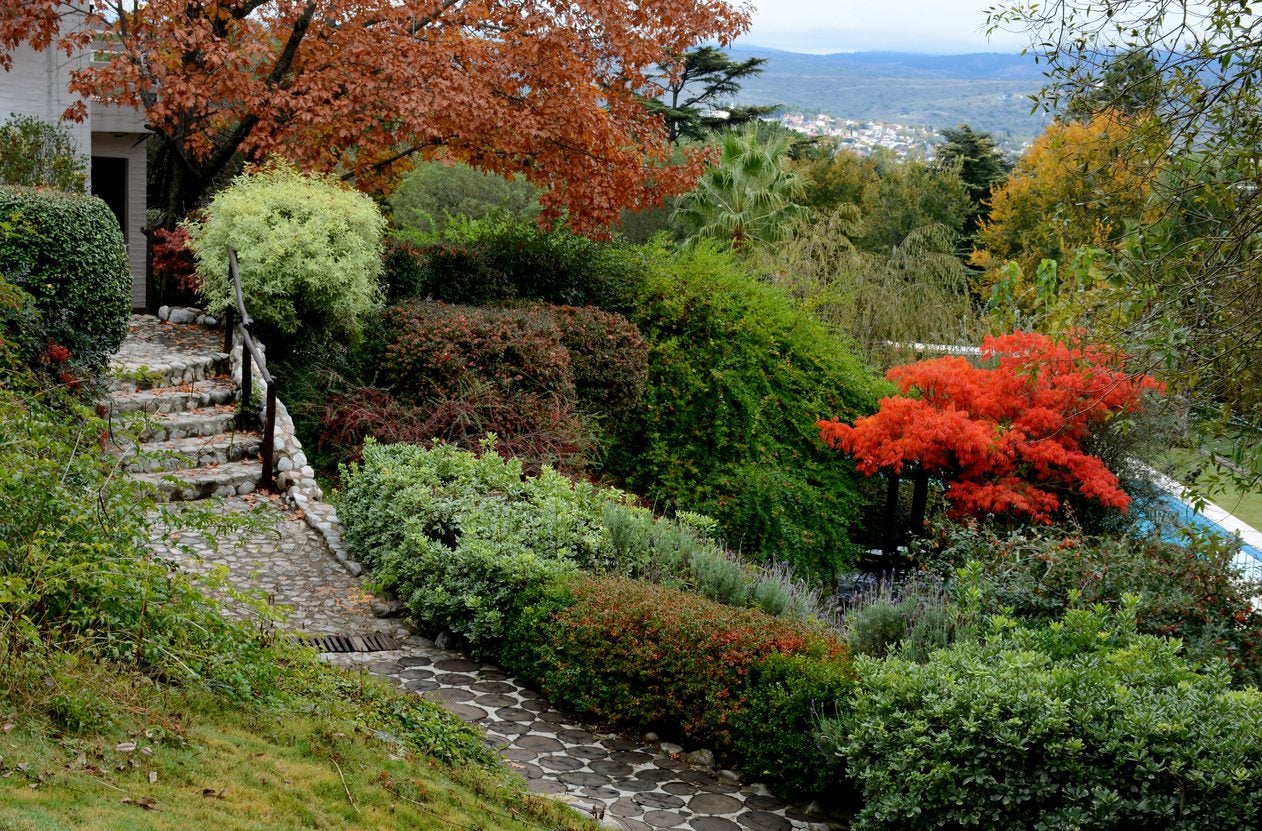Choosing Plants For Sloping Areas – What Plants Grow On Slopes


Gardening is always a challenge, but some of us have geographic issues which make the process even more difficult. Sloped properties pose particular challenges with their potential to erode, dry out, and their exposure.
Solving these problems and finding the right plants for slopes and banks takes some planning and experience. The good news is that once you know which plants grow on slopes, you can use this knowledge to your benefit to plan a garden that both thrives and helps stabilize the hillside.
Read on for some ideas on choosing plants for sloping areas and how to maximize this difficult planting terrain.
Choosing Plants for Slopes and Banks
The first steps to planting a sloping area are to evaluate the pitch and runoff. If the pitch is more than 30 degrees, it might be a good idea to terrace the area to prevent topsoil from eroding and all moisture evacuating every time you water or it rains.
Once you have solved any moisture retention and erosion problems, it is time to evaluate the site further for exposure and zone, and plan what plants grow on slopes. The types of plants you choose will depend not only on your visual preference and vision but also the needs of the area.
Deep rooted plants help stabilize soil, trees add dimension and shade to prevent excess evaporation, and low-growing groundcovers cover up unsightly areas with ease of care. Turf grass is often a choice but consider the maintenance difficulties. Mowing is challenging and water will simply run off this high moisture loving plant.
Better options might be a combination of different types of plants that are tolerant of wind, occasional drought, and have wide branching root zones to anchor them to the incline. The less maintenance, the better when choosing plants for sloping areas.
Sign up for the Gardening Know How newsletter today and receive a free copy of our e-book "How to Grow Delicious Tomatoes".
Good Plants for Sloping Areas
Although growing plants on a hillside can be a challenge, once established they can transform the area and help keep soil from slowly weeping down into the flatter parts of the terrain.
Taller shrubs and bushes add many seasons of interest and will help give the area a sculpted appeal. Just remember that young plants will need additional moisture, staking and training as they establish.
To keep maintenance down, choose plants that produce very little mess which would otherwise require extra work to clean up annually. Some plants that work well on slopes include:
- Burning Bush
- Fragrant Sumac
- Japanese Yew
- California Lilac
- Creeping Juniper
- Dwarf Forsythia
- Snowberry
- Siberian Carpet Cypress
Groundcovers are a great way to prevent erosion, cover a slope with color and texture, and conserve moisture. Avoid those that need mowing, shearing, and other maintenance. Some of the easiest groundcovers for sunny hillsides are:
Shady locations benefit from:
If you want more dimension and color, try some ornamental grasses. Plants for slopes and banks that provide this sort of appeal might be:
- Red Fescue
- Little Bluestem
- Switchgrass
- Canada Wildrye
Who can resist a hillside of flowers? Either seed the area with wildflowers native to your region or choose some ornamental perennials that are hardy to your area such as:
Growing plants on a hillside may take some careful selection and a bit of babying as they establish, but the final effect will transform the slope and help stabilize the soil and other plants.

Bonnie Grant is a professional landscaper with a Certification in Urban Gardening. She has been gardening and writing for 15 years. A former professional chef, she has a passion for edible landscaping.